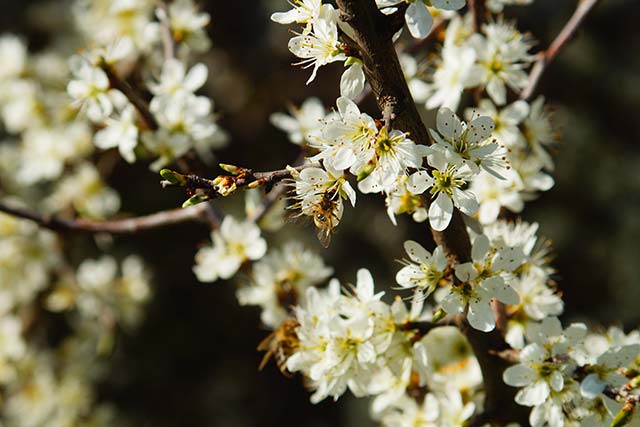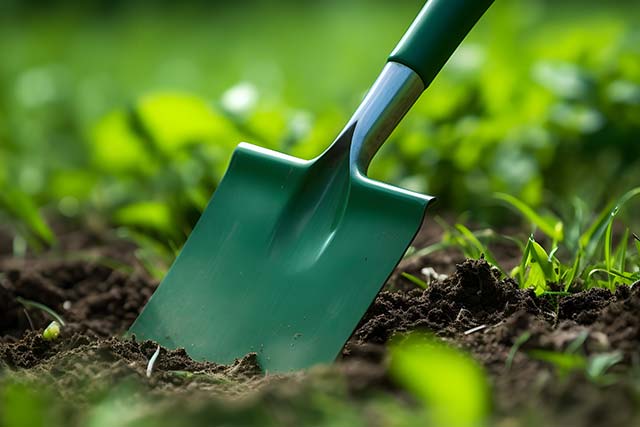Blackthorn Hedging, also known as Prunus Spinosa is a popular thorny, deciduous hedge species that provides year round seasonal interest and produces sloes in the autumn that are a hit with birds and other wildlife.
Choose from our most popular varieties of Blackthorn Hedging plants, available in a range of sizes and root types.
Blackthorn or Sloe is a thorny, native deciduous hedge plant which produces white flowers in spring, followed by attractive green leaves and Sloe's in the autumn.
Growth rate: Fast 30-60cm per year
Overall height: Medium up to 5 metres
Position: Exposed, Full Shade, Full Sun
Root Types: Bare Root, Pot Grown
Our team are on hand to help answer your questions!
info@hedgingplantsdirect.co.uk
Opening times
Monday - Friday : 7:30am - 4:30pm
Saturday & Sunday: 10am - 2pm
We are also open 10am to 2pm on bank holidays
Blackthorn, scientifically known as Prunus Spinosa, is not just a beautiful addition to a garden, but also a provider of valuable habitat and food source for wildlife.
The densely packed branches offer shelter for many species of birds and small mammals, while the sloe berries produced in autumn are a great food source for many animals.
Blackthorn is a deciduous shrub or small tree with an ultimate height of up to 5 metres tall. It has an upright, spiny growth habit with dark grey bark and oval-shaped leaves that turn yellow in autumn.
In spring, it produces beautiful white flowers, followed by small round sloes in autumn.
Blackthorn hedge plants exhibit a moderate growth rate, typically growing between 30-60 centimetres per year.
This allows it to quickly establish itself once planted, and provide an effective barrier or boundary in a relatively short span of time, even in a semi shade position.

Blackthorn are available as bare root and pot grown plants, each with their own advantages.

Bare root Blackthorn plants are a cost-effective and eco-friendly solution for your hedging needs.
These plants are sold without soil around their roots, making them easy to transport and reducing their environmental impact.
As they're usually sold during the dormant season, they're ready to burst into life once planted, and they're well-suited to a wide variety of soil types, making them a flexible choice for many gardeners.

Pot grown Blackthorn plants offer convenience and flexibility. These cell grown plants can be planted throughout the year, so there's no need to wait for the dormant season.
The plants, already rooted in their pots, often establish more rapidly, and their survival rate tends to be higher.
This makes pot grown options a viable choice for gardeners seeking a more immediate impact from their hedging.

For a step by step process and further information on how to plant a new hedge, please see our comprehensive hedge planting guide.
The ideal time to plant Blackthorn Hedging depends on the type of plant you've chosen.
Bare root Blackthorn should be planted during the dormant season, which usually falls between November and March in the UK.
This is when the plant is not actively growing, which allows it to establish itself in its new location without the stress of maintaining leaves.
On the other hand, pot grown Blackthorn Hedging plants can be planted throughout the year, as they're already established in soil and can handle the transition.
However, do remember to water more frequently during drier periods, particularly in summer months, to ensure successful establishment.

The distance between each Blackthorn hedge plant depends on the root type and size of the plant.
Please refer to our Blackthorn Hedge spacing chart below which contains the correct planting spacing and distances for each root type and plant size.
Blackthorn Hedging thrives best in moist, well-drained soil, demonstrating a particular preference for chalky or loamy soils.
Although it's known for its robust adaptability to varying soil conditions, Blackthorn tends to grow less enthusiastically in heavy clay or overly sandy soils. In terms of sunlight exposure,
Blackthorn exhibits flexibility, growing well in both full sun, semi shade and full shade. Whether you're planting it in an exposed or sheltered site,
Blackthorn hedging will flourish, providing a stunning, wildlife-friendly hedge that offers year-round interest.
To ensure the longevity and health of your Blackthorn hedges, regular pruning and maintenance is essential. Below, we offer valuable tips and advice on how to properly care for your Blackthorn.
The best time to prune a Blackthorn hedge is during the dormant season, between November and March in the UK. This allows for a more thorough pruning without disturbing nesting birds or damaging new growth.
To maintain a neat and tidy appearance, cut back any overly long or bare branches using sharp secateurs or hedge trimmers.
Remember to wear protective gloves due to the plant's thorny nature. To encourage dense growth, prune back older branches to allow younger shoots to thrive.
Blackthorn hedges aren't particularly demanding when it comes to watering and fertilising. During the establishment period (usually the first two years after planting), you should ensure the plants receive adequate water, particularly during drier weather.
Providing a thorough soaking once a week should suffice, but avoid waterlogging the soil. As for fertilising, an annual application of a general-purpose fertiliser, such as slow release hedge feed, in late winter or early spring can help boost growth and overall health of the hedge.
However, Blackthorn is generally tolerant and can thrive without additional feeding, especially if planted in rich, well-drained soil.
Blackthorn hedging typically flowers in early spring, usually from March to April in the UK. The bright white blossoms emerge before the leaves, creating a stunning contrast against the dark branches.
The flowering period can depend on local weather conditions and is an eagerly awaited spectacle that signals the onset of spring.
Absolutely, Blackthorn prunus spinosa makes an excellent hedge. Its dense growth habit, versatility in a range of soil types and exposure conditions, and wildlife-attracting qualities make it a popular choice for hedging.
In addition to providing robust security with its thorny branches, the Blackthorn hedge also blooms beautiful white flowers in the spring and bears dark fruits in the autumn, adding seasonal beauty to your landscape.
Its resilience and low maintenance requirements further enhance its appeal as a hedging plant.
Blackthorn prunus spinosa hedges are known for their moderate to fast rate of growth. On an average, they can grow about 30 to 60cm per year.
However, it's important to note that the actual growth rate can vary based on factors such as soil type, sunlight exposure, and overall care.
Regular watering and annual feeding can promote healthier and more vigorous growth.